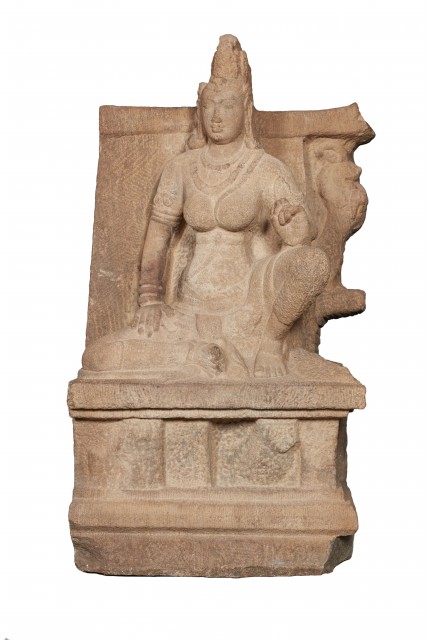
Seated Female Figure, perhaps Parvati

Photography by Synthescape, Digital image © Asia Society
Seated Female Figure, perhaps Parvati
8th-9th century
India, Tamil Nadu
Granulite
H. 67 x W. 34 3/4 x D. 34 in. (170.2 x 88.3 x 86.4 cm)
Asia Society, New York: Mr. and Mrs. John D. Rockefeller 3rd Collection, 1979.16
Provenance
John D. Rockefeller 3rd, New York, NY; acquired from Helen Stillman, New York, NY by 1970.
The Asia Society, New York, NY, bequest of John D. Rockefeller 3rd, New York, NY, 1979.
Licensing inquiries
The clothing, jewelry, and confident posture of this figure suggest that she might represent a queen. This identification is supported by the importance of women as patrons and the fairly early use of idealized portraits of rulers in the imagery of south Indian temples. However, it was unusual for women to wear the sacred thread, which drapes from the left shoulder across her torso, so it is also possible that this sculpture is a representation of a Hindu goddess. The position of the figure's right hand and the remnants of a stem and flower indicate that she was once holding a lotus, a gesture commonly used in representations of the goddess Parvati, Shiva's wife. A seated queen in granite, this is one of the monumental and artistically superlative pieces of sculpture in this collection. It is a superb example of early Medieval South Indian stone sculpture. It is transitional from Pallava to Chola. It radiates the entire spirit of the early period. It is monumental in size as well as quality.
